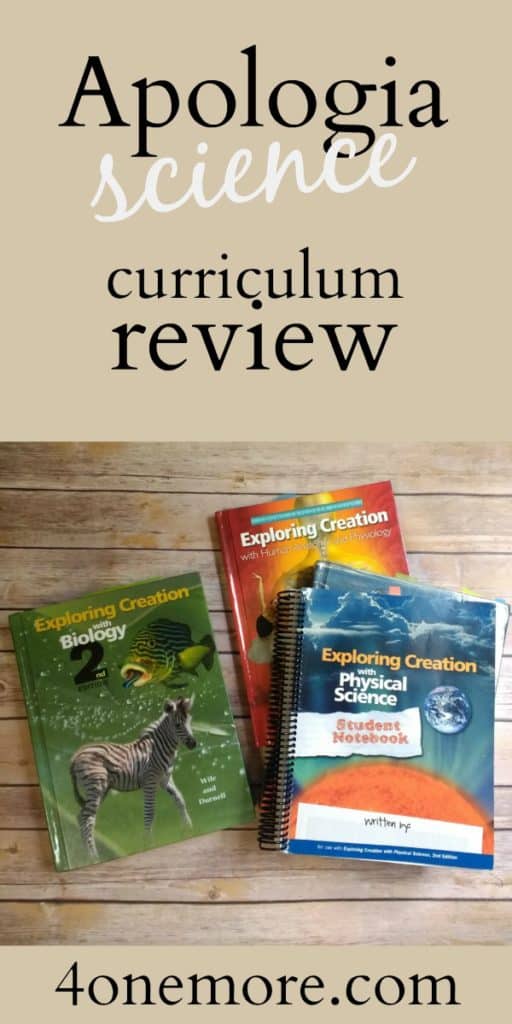In this Apologia review, we’ll show you how to help your kids love science even if you didn’t as a kid!
When you have a less-than-stellar education in a subject as a kid, you tend to pass on your dislike of that subject to your own kids. I didn’t have a terrific science education in K-12, even in a private school. So, unfortunately, I have seen how my kids also have picked up an ambivalent attitude toward science.
Can you relate? If science isn’t your strong point, you need to find a curriculum that will do the heavy lifting for you without boring your kids to tears! After homeschooling for over a decade, I have finally landed on my favorite science curriculum: Apologia. I sure wish I had tried it years ago!
Let me tell you all about it.
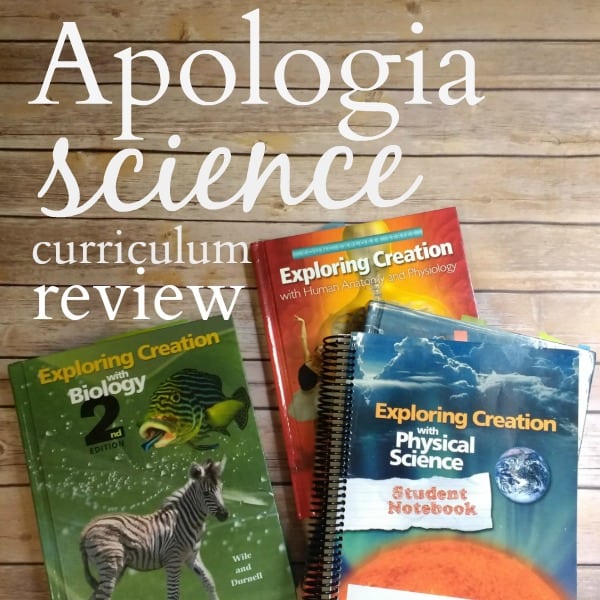
My posts contain affiliate links.
Our Family’s Science Journey
Our science journey through the years (for good or bad) has looked like this:
- Building Foundations of Scientific Understanding K-2
- Unit Studies K-4
- Answers in Genesis: God’s Design Series
I picked up the Building Foundations book because of a recommendation at the time. It did more to help me fill in the gaps of my own scientific understanding rather than the gaps my kids had. It is written for the parent and up to the parent to translate it into kid-friendly knowledge. The basics of every scientific field is covered: matter, life science, earth science, space. If you want a one-stop science plan with 41 lessons set out for you at a K-2 level, then this book might be a good start. You can supplement with library books and hands-on approaches to the topics.
Throughout the early elementary years, we did unit studies and lap books on various topics. These are easily found on Pinterest. Or check out UnitStudy.com
Starting in third grade through middle school (for my oldest), my four boys (five years separate the oldest from the youngest) studied together through the God’s Design series. These books separate assignments and projects into younger and older categories, making it easy to use for many different grade levels. This is a terrific curriculum and I still recommend it. It might work better for you than Apologia because of the way you can group multiple ages together, plus it’s not written like a traditional textbook. You can fill it out with lap books and note booking, and lots of library books.
You can purchase each set (3 books each) separately, or buy the whole curriculum as one package. The curriculum does include worksheets and tests (and answers) if you intend to use these. We did not faithfully test science from K-8th. I wanted it to be an enjoyable subject, not dreaded because of testing.
Science for K-8
If I could go back (and I am with child #5 who started Kindergarten this year), here’s how I would structure science in K-12:
- Read, read, read
- Unit Studies
- Apologia
In the youngest grades (K-2), there is no substitute for getting loads of interesting science-topic books from the library and reading. Is your child fascinated with bugs? Explore that. Catch bugs in the back yard and study them. Does your child love to learn about space? Read up on it, then head outside on a cloudless night with a telescope or a fun constellations Sky Map app.
Once your child is around third grade and above, you can add more written components to your science study, through note booking, lap books, and unit studies. Start to combine some skills from Language Arts into your science time. Can your child narrate back what you learned from reading about leaves in the library book? Great! Write it down for her, then have her copy it into her notebook in her best handwriting. There – you just covered science, narration, and copywork (handwriting) all at once.
I would suggest continuing to cover a wide range of science topics with a relaxed reading and unit study approach all the way to middle school. You could continue this into middle school as well, or at this point, you could jump on in with Apologia resources for a bit more structure.
We have used three Apologia science curriculums so far, and I don’t think we’ll ever go back to other resources. Here’s what we’ve used.
Apologia Science Curriculum Review
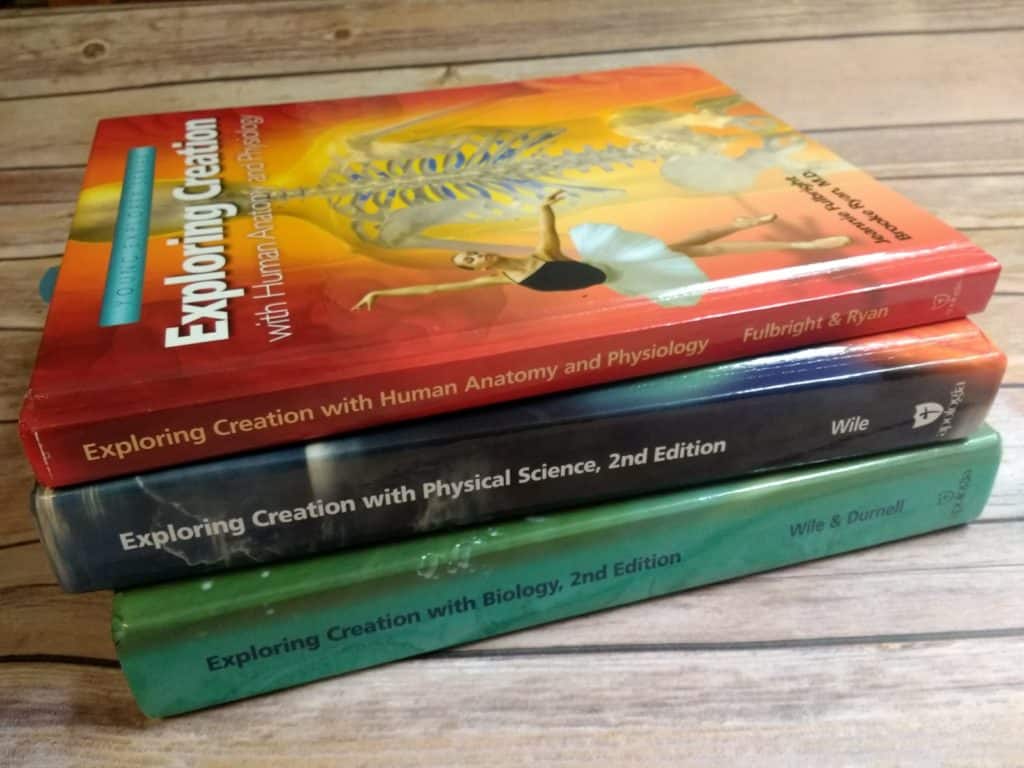
Young Explorer Series: Exploring Creation with Human Anatomy & Physiology
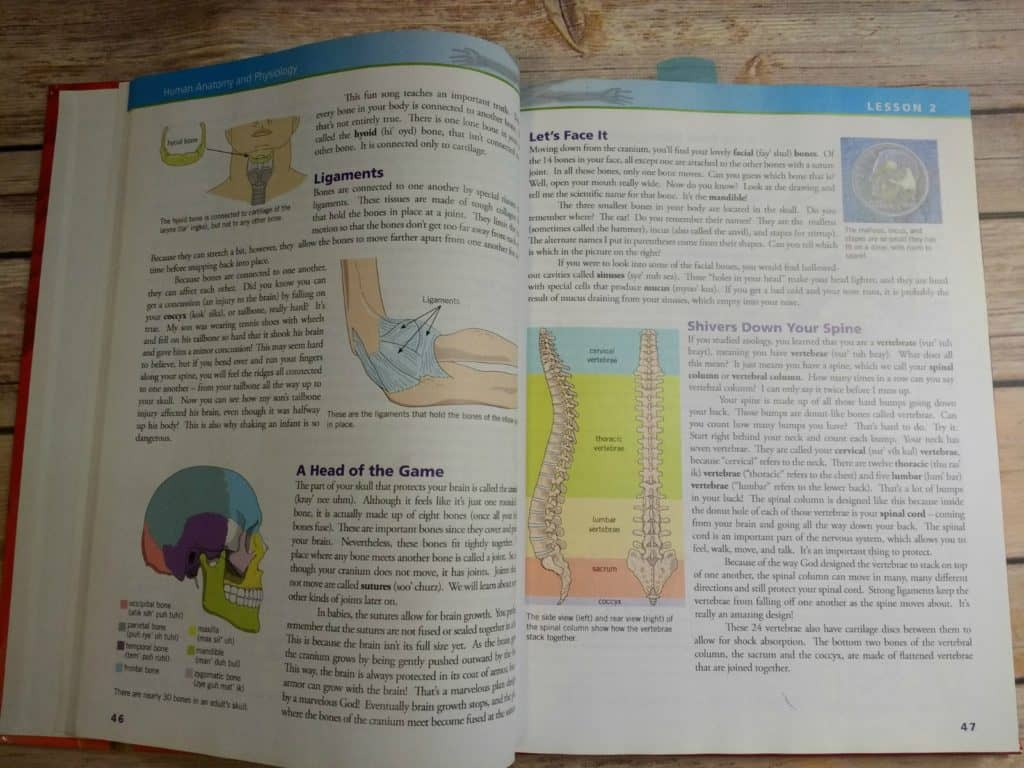
This text is listed by Apologia as K-6th curriculum, but my 4th and 7th graders used it last year. We didn’t purchase the student notebook, although it would definitely add to the scaffolded approach as your child learns to analyze information from a textbook and organize it via notes and graphic organizers.
I had my kids keep a science notebook in a simple spiral notebook last year. They read the next topic for they day, then sketched a diagram if applicable, or wrote down terms and definitions, or summarized the text in a paragraph with their own words. They enjoyed the writing style in this book and it was a good experience for them.
Apologia Review: Biology
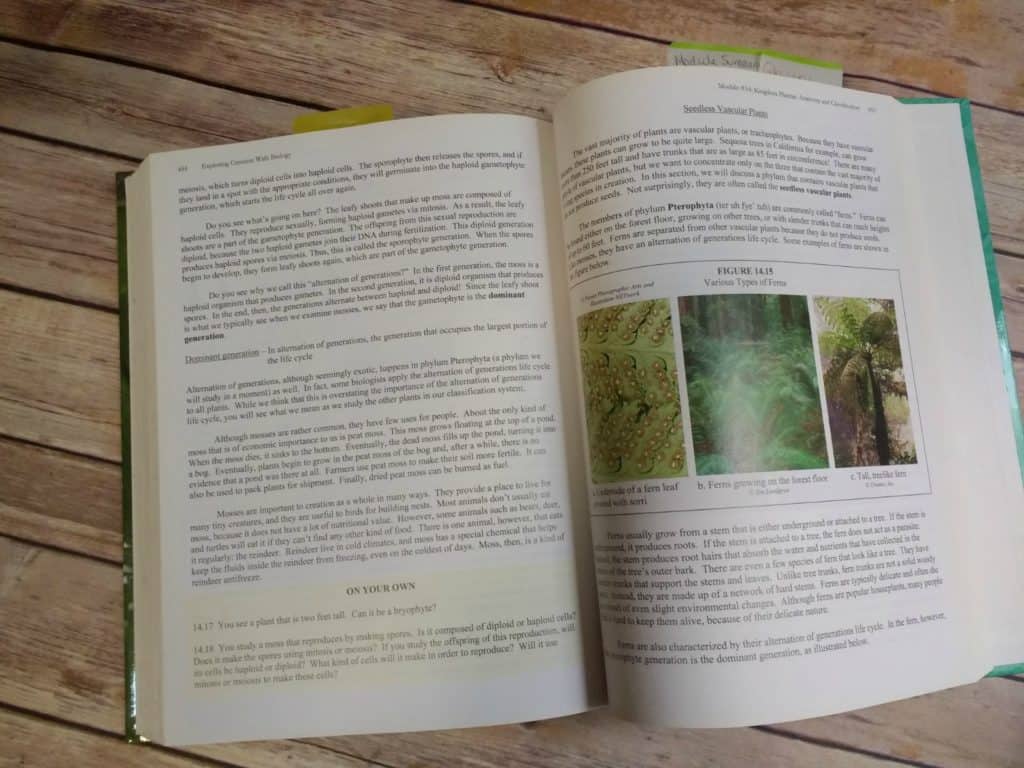
When I had my first high schooler last year, we jumped into 9th grade with Apologia Biology. And we were not disappointed!
This resource is located on Apologia’s website under the high school curriculum.
This text is written in a conversational style and it is easily understood by my teens. It helps them in self-directed learning and provides resources along the way for self-assessment and study skills.
It is a solid, difficult text, but the resources they provide made it possible for my 9th grader to be successful on his own with this course. Apologia mentions in the front of this text:
“…we pride ourselves on the fact that this course is user-friendly and reasonably understandable. At the same time, however, it is not EASY. This is a tough course. We have designed it so that any student who gets a “C” or better on the tests will be very well prepared for college.”
Regular science experiments are included, along with lab reports, and most of the items needed were easy to locate if they weren’t household products. We did purchase some specimens for dissection.
We purchased the textbook, the student notebook, and the answers/tests/study guides book. I recommend purchasing all three companion products.
Apologia Review: Physical Science
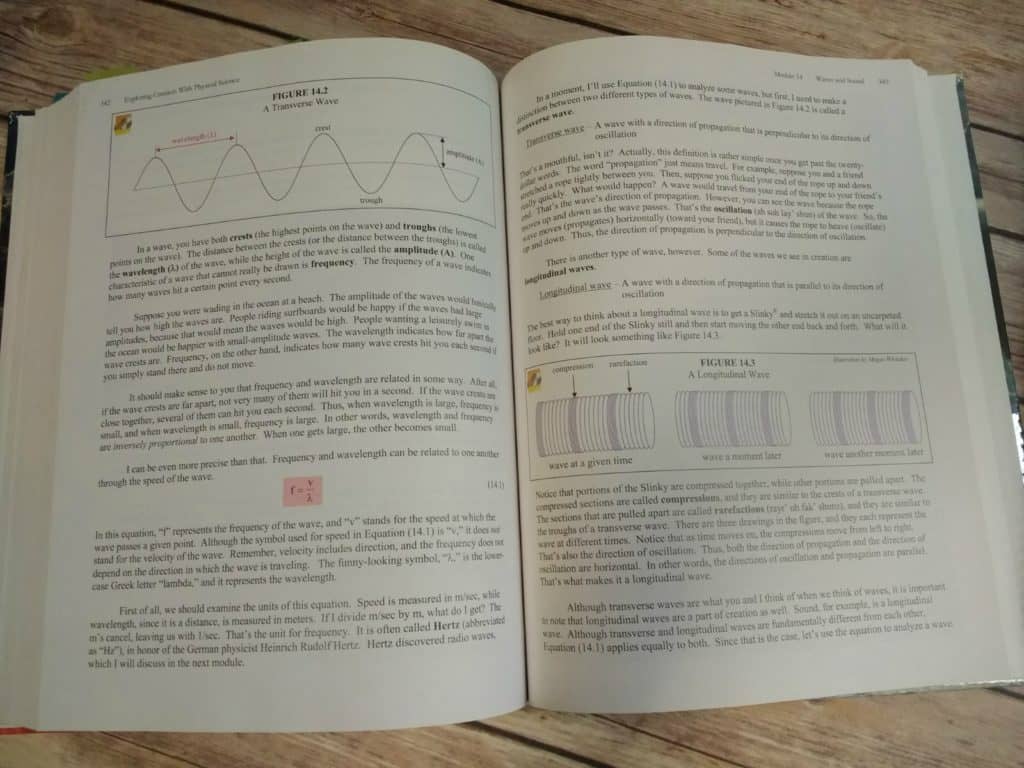
Apologia Physical Science is listed as a Jr. High text, but we are using it this year for two high schoolers. It is still challenging enough for my high schoolers, and it will provide a solid foundation in chemistry and physics, which they will study as separate high school-level courses in the next few years.
I originally planned to use BJUP Physical Science for them, which I believe is a more rigorous text. However, if we had used the BJUP Physical Science, they would be more on their own to learn the material. Since I’m not a great science tutor for them, I decided to use the Apologia text instead as it is created specifically with homeschooled students in mind, and written in a way that is usable as an independent learner.
Homeschool for the win: being able to pivot and change things up!
However, my Ultimate YouTube Playlist for Physical Science is still a great tool, no matter which science spine you use. These videos are on the middle or high school level, and are divided out according to the table of contents in the BJUP Physical Science curriculum.
Once again, we purchased these three essentials: textbook, one spiral student notebook per child, and the test/answers/study guide book.
Take a look inside the student notebook:
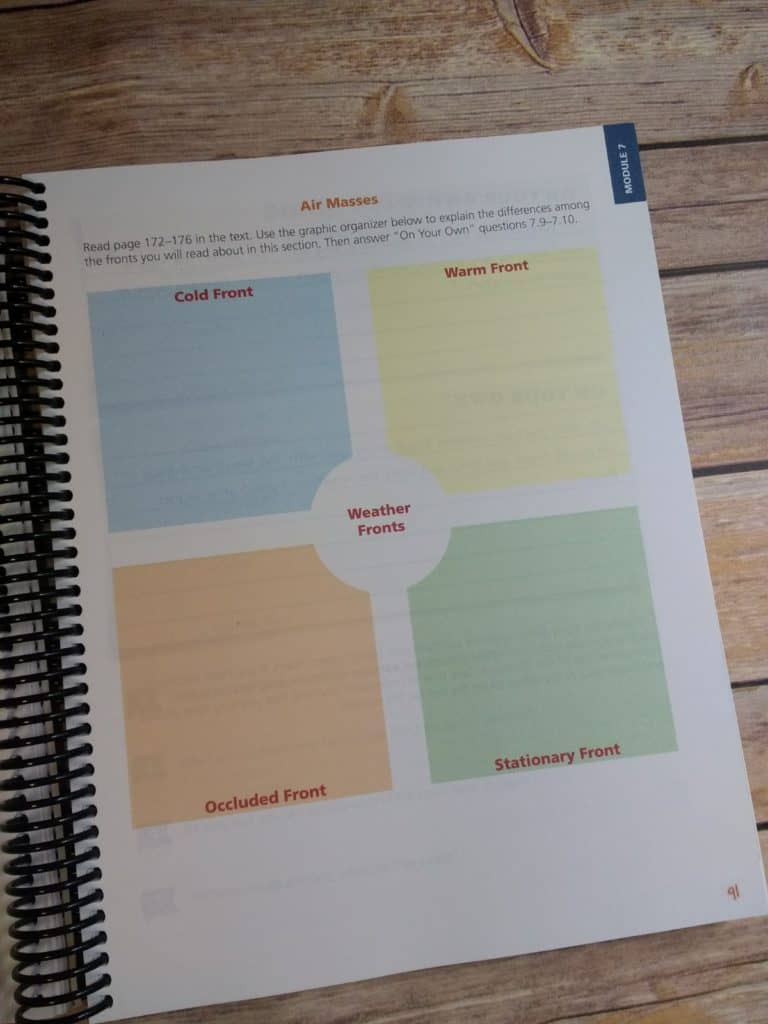
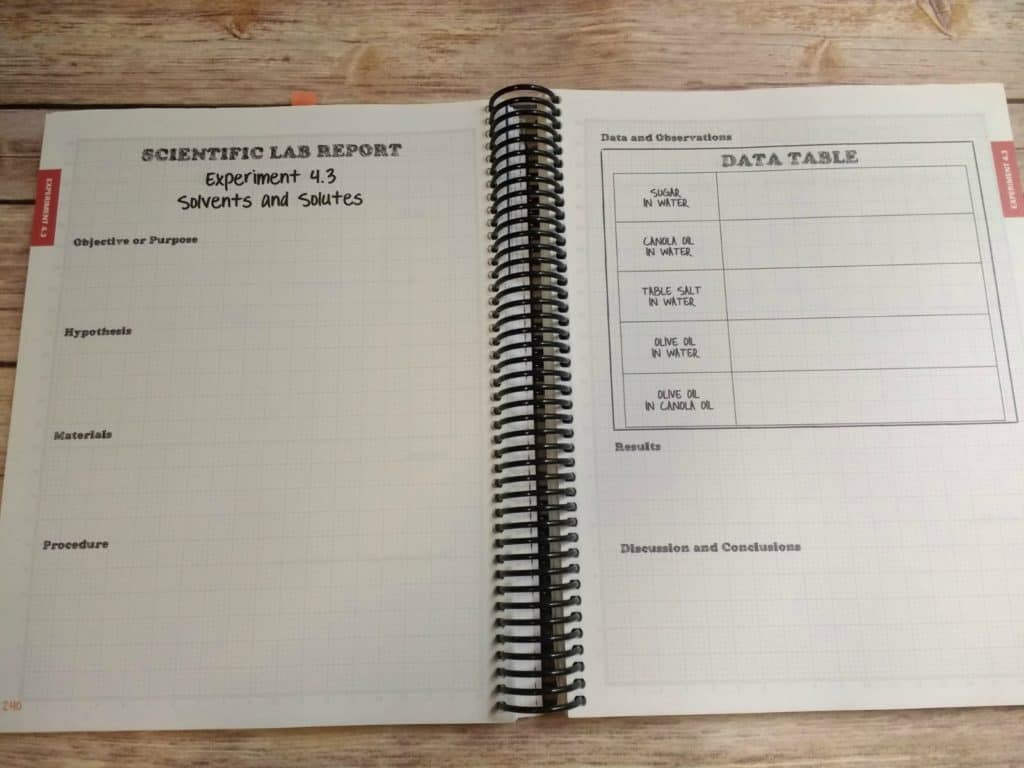
Why we love it
- teaches kids to be independent learners
- not mom intensive
- scaffolded study skill learning
- teaches how to take notes and use graphic organizers
- tests that test for understanding, not mere fact memorization
- teaches how to conduct experiments and take notes on the experiment
- shows how science applies to the everyday
A note about tests and test prep:
The student notebooks include optional module summaries for review. We always use these, and they provide an excellent independent review of the material for the test. Answers to these are in the separate tests/answers book.
The tests in the Physical Science and Biology courses are written to test for understanding! They do not equate success with spitting out facts that you do not understand. I really appreciate this about the Apologia curriculum. The tests are not long; sometimes they are less than 15 questions. And you will rarely find multiple choice on these tests. Most of the test is applying what the student learned to real life scientific questions. If the student understands the material, he will be able to answer correctly. In my opinion, these tests show the best use of an assessment tool.
What you should purchase
- Textbook
- Student Notebook for each child (at least for the middle school to high school level courses)
- Tests and answers booklet (at least for the middle school to high school level courses)
At the younger grades (below middle school), we just purchase the text and create our own science notebooks. Starting in the upper grades, I recommend at least these three components. Apologia also sells additional components to round out these courses if you prefer: audio CD’s and video instruction DVD course. If you have the budget and want to purchase these items, then go for it. But if you’re trying to slim down your already-thrifty homeschool budget, I don’t think they’re necessary.

Find lesson plans available for this product at Homeschool Planet. Sign up for a 30-day FREE trial.
How we use it
- Simple lesson planning on Trello which tells the kids to “do the next lesson” each day
- Student notebook provides a daily “to-do” checklist
- Read the text and complete the graphic organizer or notes in the student notebook
- Conduct experiment if required
- Watch corresponding videos from Ultimate Playlist for Physical Science
Take a look at Apologia if you want a Christian-worldview science curriculum that is rigorous, yet easy for kids to follow and not a burden for mom to help implement!
